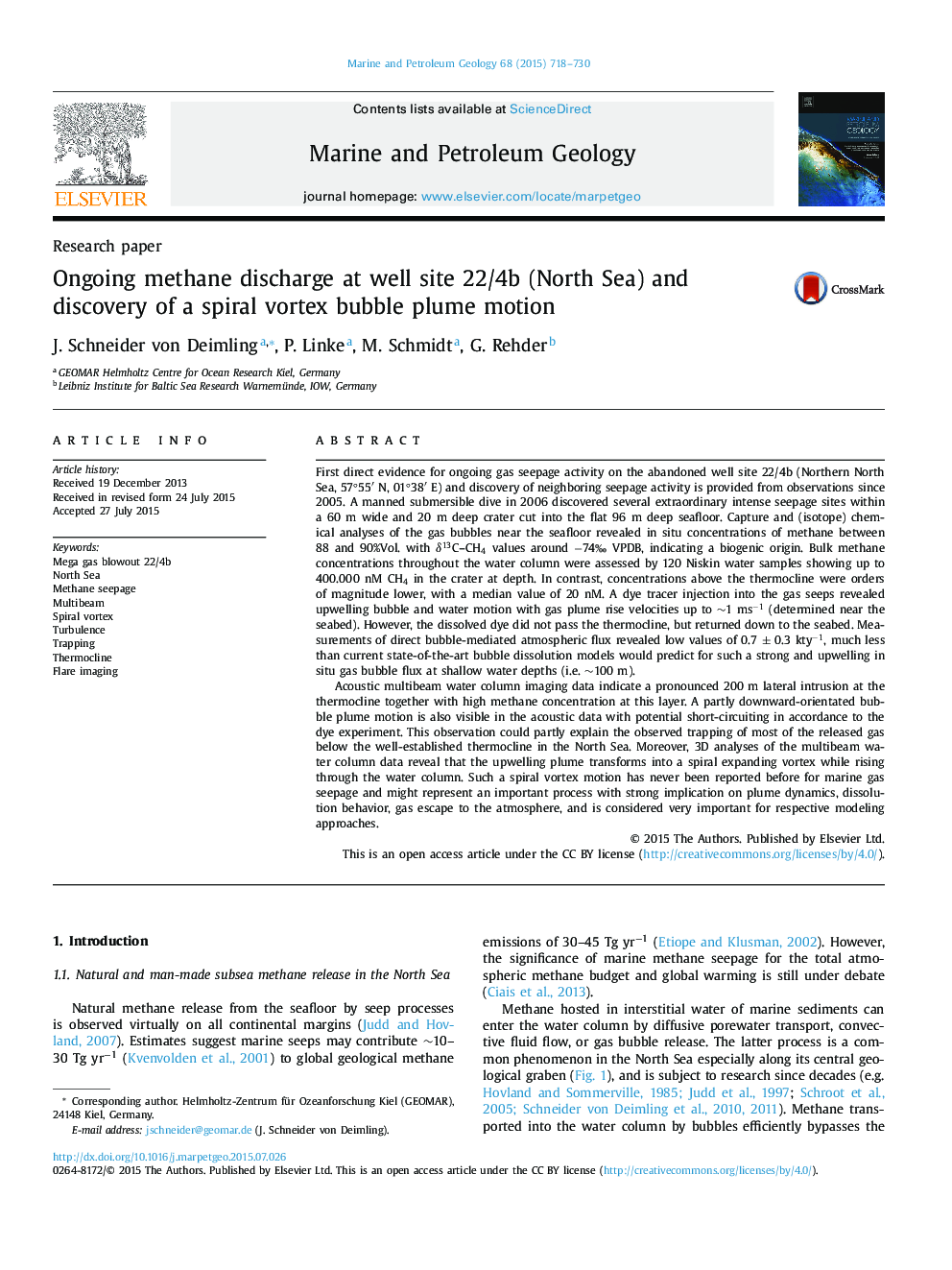| کد مقاله | کد نشریه | سال انتشار | مقاله انگلیسی | نسخه تمام متن |
|---|---|---|---|---|
| 6434854 | 1351605 | 2015 | 13 صفحه PDF | دانلود رایگان |

- Mega ebullition of biogenic methane from an abandoned offshore gas well, North Sea.
- Evidence for midwater bubble plume intrusion, fallback, and short-circuiting of the plume.
- Effective trapping of seabed released methane underneath the thermocline.
- First observation of a spiral vortex methane plume and marginal turbulences.
- Megaplumes appear less efficient in terms of vertical methane transport than previously thought.
First direct evidence for ongoing gas seepage activity on the abandoned well site 22/4b (Northern North Sea, 57°55â² N, 01°38â² E) and discovery of neighboring seepage activity is provided from observations since 2005. A manned submersible dive in 2006 discovered several extraordinary intense seepage sites within a 60 m wide and 20 m deep crater cut into the flat 96 m deep seafloor. Capture and (isotope) chemical analyses of the gas bubbles near the seafloor revealed in situ concentrations of methane between 88 and 90%Vol. with δ13C-CH4 values around â74â° VPDB, indicating a biogenic origin. Bulk methane concentrations throughout the water column were assessed by 120 Niskin water samples showing up to 400.000 nM CH4 in the crater at depth. In contrast, concentrations above the thermocline were orders of magnitude lower, with a median value of 20 nM. A dye tracer injection into the gas seeps revealed upwelling bubble and water motion with gas plume rise velocities up to â¼1 msâ1 (determined near the seabed). However, the dissolved dye did not pass the thermocline, but returned down to the seabed. Measurements of direct bubble-mediated atmospheric flux revealed low values of 0.7 ± 0.3 ktyâ1, much less than current state-of-the-art bubble dissolution models would predict for such a strong and upwelling in situ gas bubble flux at shallow water depths (i.e. â¼100 m).Acoustic multibeam water column imaging data indicate a pronounced 200 m lateral intrusion at the thermocline together with high methane concentration at this layer. A partly downward-orientated bubble plume motion is also visible in the acoustic data with potential short-circuiting in accordance to the dye experiment. This observation could partly explain the observed trapping of most of the released gas below the well-established thermocline in the North Sea. Moreover, 3D analyses of the multibeam water column data reveal that the upwelling plume transforms into a spiral expanding vortex while rising through the water column. Such a spiral vortex motion has never been reported before for marine gas seepage and might represent an important process with strong implication on plume dynamics, dissolution behavior, gas escape to the atmosphere, and is considered very important for respective modeling approaches.
Journal: Marine and Petroleum Geology - Volume 68, Part B, December 2015, Pages 718-730